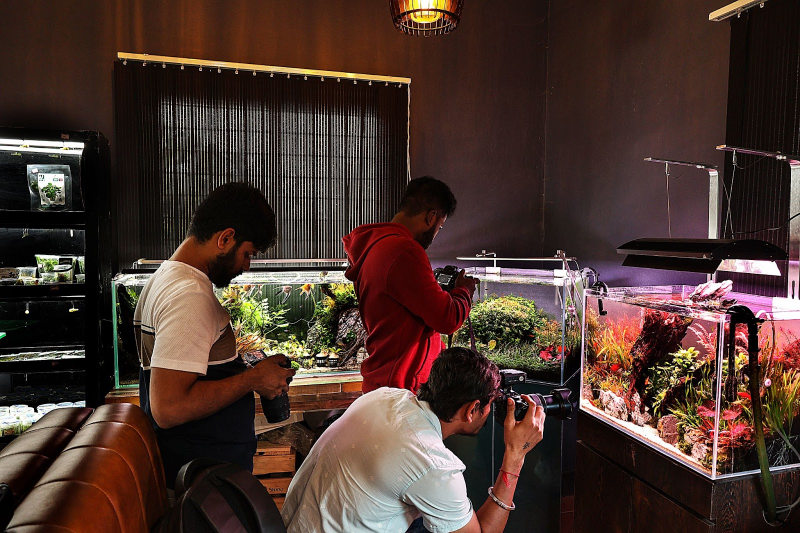
Outdoor Fish Aquarium Photography
At LISAA School of Design and CREO valley photography students had a hands -on experience and a great challenge of Outdoor Fish Aquarium Photography .
Basically, there are five common elements that great images typically have; Good use of light, color, a captivating moment, correct composition for the given situation, and the photographer’s choice of distance to their subject.
The single biggest challenge to aquarium image creation is dealing with the external reflections. The aquarium is lit so you can find your way around, which can cause issues because the light reflects off of everything! In order to even be able to attempt taking worthwhile photos, you need to control the reflections. Blocking them is a start. You could wear all black clothing to block the reflections…but even all black clothing usually has buttons… and then there’s the issue of your face. it reflects too.
So, the solution is to use a lens hood. When pressed against the face of the aquarium tank, a lens hood will form a cone of reflection free darkness. The problem is that a hard lens hood that’s made of either plastic or in some cases, metal, will still have some issues. They can scratch the front of the tank’s glass or acrylic surface. As photographers, we need to tread lightly and not ruin the experience for the next visitor. Additionally, many lenses now come with scalloped hoods that would still let in light. By using a simple generic rubber lens hood, you can create a completely reflection-free cone of darkness.
Aquarium images aren’t as easy as we think . Trying to keep moving subjects in focus that are being lit by low-level artificial lighting is just the tip of the photographic iceberg.
Be ready to lightly/safely clean the glass/acrylic with a lens cleaning cloth. People, especially very young ones, like to touch the transparent aquarium walls and that results in smeared fingerprints. While those smears being close to the lens may not have a big impact on image quality, give yourself a clean surface to photograph through.
At an aquarium, plan on shooting in very low light levels and know that many of the subjects are constantly moving . Understand that a wider aperture lens is going to stop action better, but the wide aperture shallow depth of field may or may not work for the situation. A tripod will be very difficult to manage even , especially with the crowds, but image stabilization is very helpful. Also, leaning against the tank with a non-scratching surface helps stabilize the image.
If you care to learn further about how workshops are structured at LISAA School of Design, please click below to get in touch with our team.